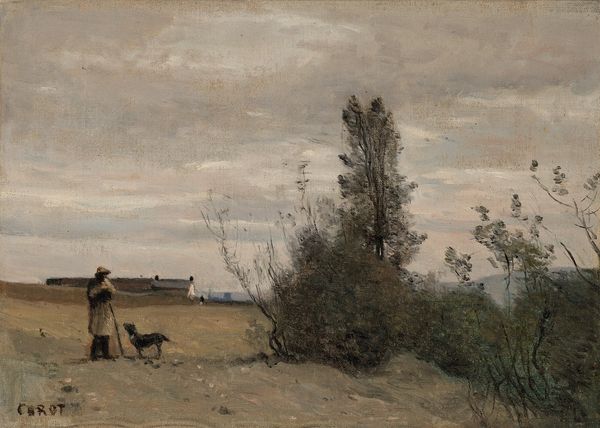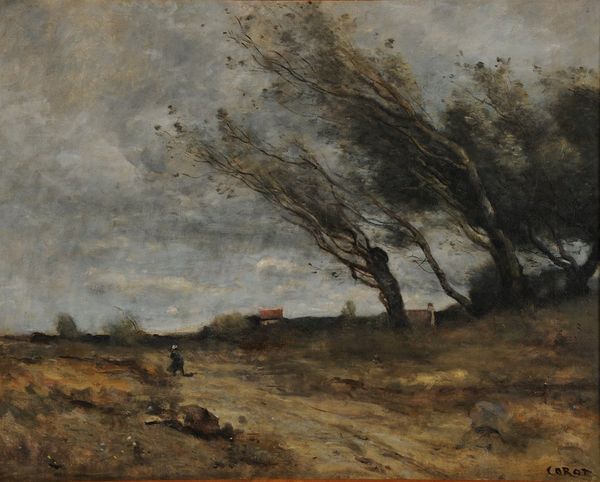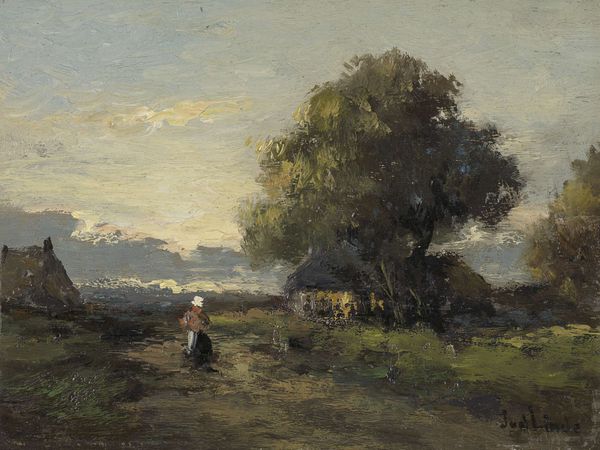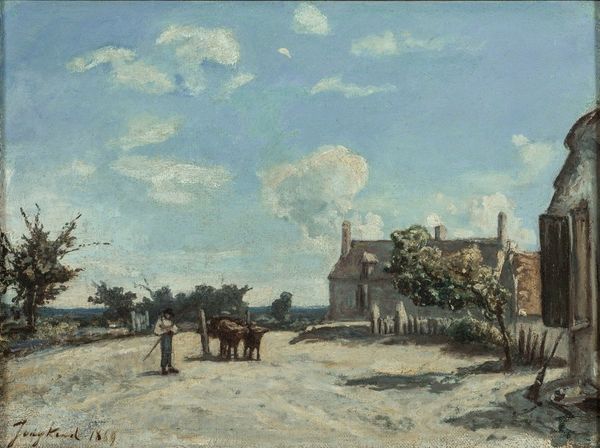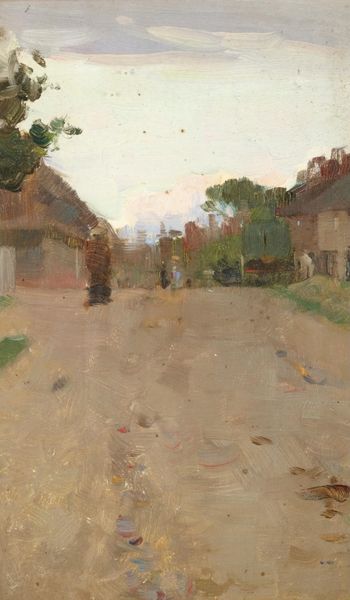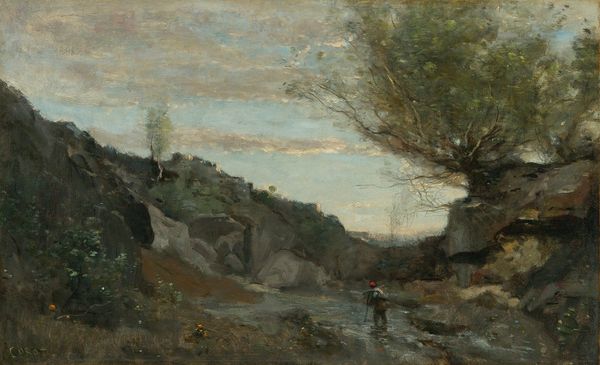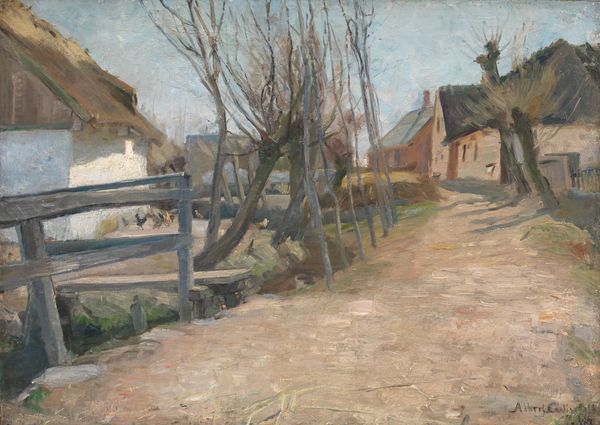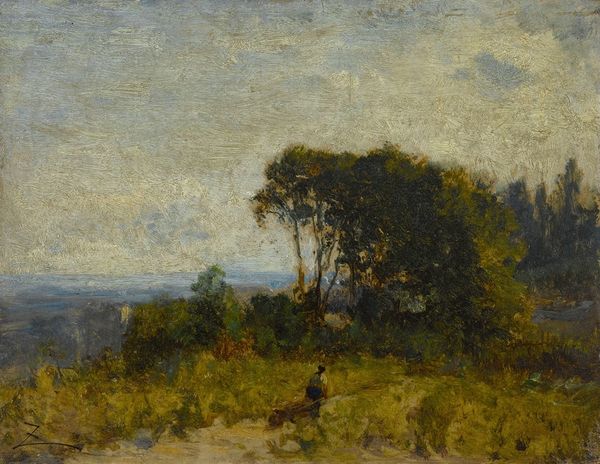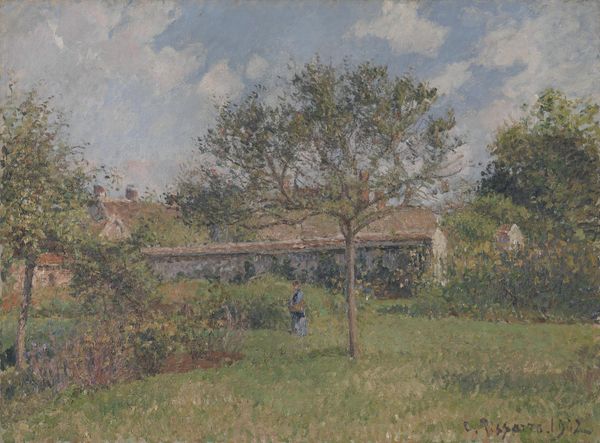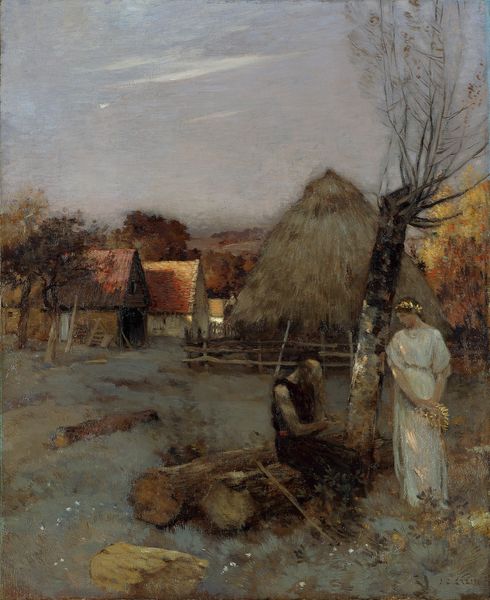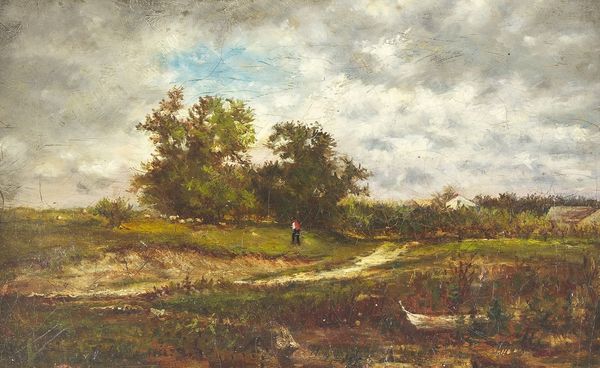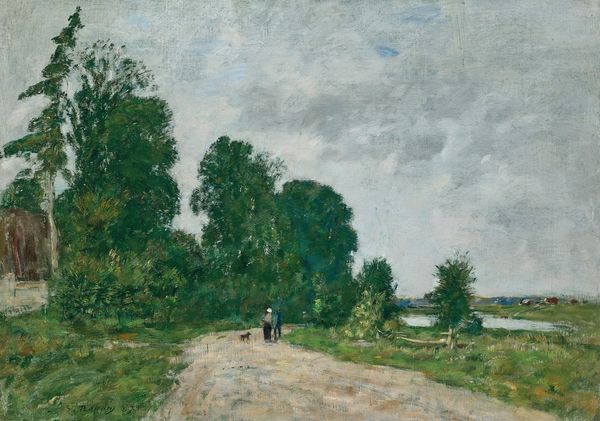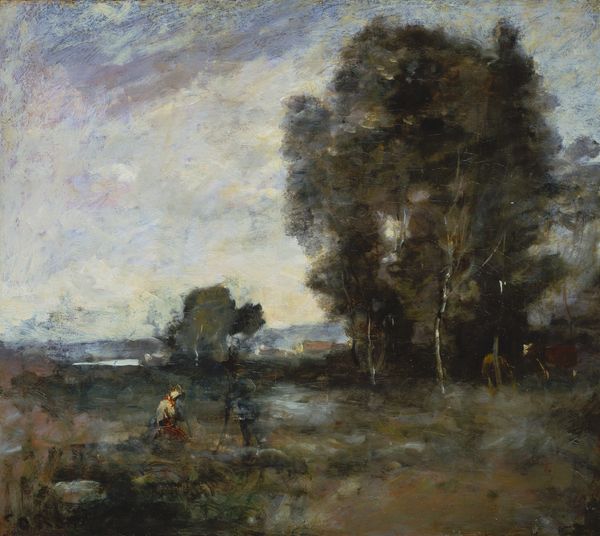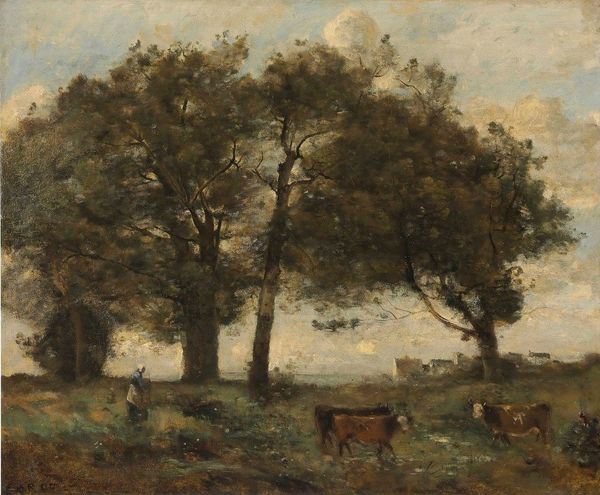
painting, plein-air, oil-paint
#
painting
#
french
#
plein-air
#
oil-paint
#
landscape
#
oil painting
#
romanticism
#
genre-painting
Copyright: Public Domain: Artvee
Curator: I find myself drawn to this intimate scene. It’s entitled "Paysanne Sur Une Route En Vue D’un Village," often translated as "Peasant Woman on a Road Overlooking a Village," attributed to Camille Corot. Editor: My eye is immediately caught by the textures. Look at the rough, earthy path and how it contrasts with the soft sky. The whole thing has a tactile quality, like you could feel the dust between your fingers. Curator: Absolutely. And consider the social context. This was painted at a time of immense social change, the rise of industrialization, and urbanization was altering the landscape. Corot focuses on rural life, and it has a deep connection with romanticism, he presents us a view of idealized and timeless peasantry. Editor: Yes, idealized, but also materialized through Corot’s working method. The visible brushstrokes and the use of oil paint – ground pigments, linseed oil. We tend to ignore the raw, material labor involved in these idyllic images. That the artist buys his colours at the shop and doesn't prepare them manually changes production... Curator: I agree. And it reflects changing art world dynamics. His work gained increasing prominence with the rise of art exhibitions, salons, and the increasing importance of public display. He had to grapple with all these. But, tell me, what do you feel when you see this image? Editor: Melancholy, definitely. The lone figure of the peasant woman… what is she carrying? What’s her life like? It makes you think about the work and labour. Curator: I find that so interesting given the historical forces at play that directly affected peasantry! The shift towards urban employment, enclosure movements... All contributing to reshaping rural life in France at this time. And consider Corot's patrons. Who was acquiring art such as this, and how did it function within the larger economy of image-making at this period? Editor: True, we shouldn’t romanticize the process of art consumption! Corot probably mixed and touched the same materials the peasant worked with… ground! Curator: His choice of subject matter then, also can be viewed in the market conditions. Corot likely calculated that a market existed for tranquil rural scenes, something that evoked a kind of pre-industrial sentiment. Editor: Absolutely, looking beyond the aesthetic gives us the ability to start unpacking the full picture, or perhaps… painting the entire landscape? Curator: I like the pun, I agree! And understanding both the material and the institutional contexts enriches our understanding greatly, beyond aesthetics!
Comments
No comments
Be the first to comment and join the conversation on the ultimate creative platform.
